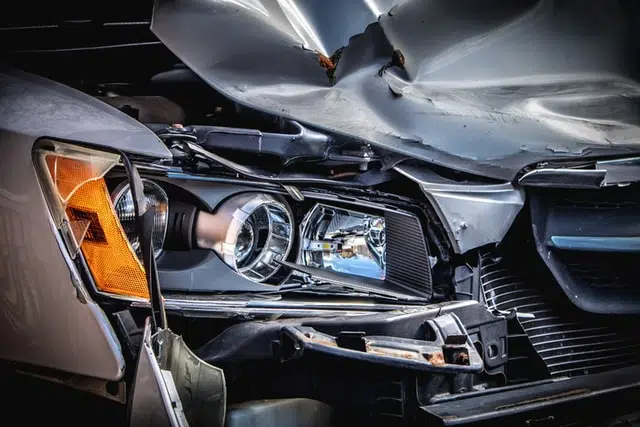Home » Blog » Car » Car Insurance Insights » Make a Comprehensive Car Insurance Claim in 6 Steps
Categories
Tags
animal welfare
breed profile
buying a car
buying a pet
Car
car accessories
car care
car features
car insurance
Car safety
car sales
car service
cat
cat behaviour
cat body language
Cat Breeds
cat food
cat insurance
comprehensive car insurance
Dog
Dog Behaviour
dog body language
Dog Breeds
dog food
Dog Insurance
dog training
eco friendly cars
Kitten
New Car
pet accessories
pet activities
Pet Adoption
pet breeders
pet days of the year
pet fun stuff
Pet Health
pet insurance
pet parenting
Pet Safety
pet services
Puppy
rescue pets
road safety
road trip
safe driving
Recent Blog:
Facebook Posts
1 day ago
Growing old sometimes means we can’t take care of pets anymore. Find out some advice on what to do when this happens:![]()
![]() Senior Pet Parents – Contingency Plans for Your Pet – bit.ly/44bzwkS
... See MoreSee Less
Senior Pet Parents – Contingency Plans for Your Pet – bit.ly/44bzwkS
... See MoreSee Less
Senior Pet Parents' Contingency Plans for Pets
www.pd.com.au
Sometimes senior pet parents need more downtime. For older pet owners, this can be tricky to navigate if their dog or cat is full of beans and wants to3 days ago
Before you rev up the engine, let’s run through a checklist of things to do before starting your car. Not only do these steps ensure your safety (and that of others around you), but they also help in maintaining your vehicle's longevity.![]()
![]() Driving Tips: Your Checklist Before Starting Your Car -
... See MoreSee Less
Driving Tips: Your Checklist Before Starting Your Car -
... See MoreSee Less
Driving Tips: Your Checklist Before Starting Your Car
www.pd.com.au
Heading out for a drive? Hold up a second! Whether you're dashing off to work, running errands, or embarking on a road trip adventure, there are a few1 week ago
Are intestinal worms setting up camp in your dog’s gut without paying rent? Here’s how to spot the main culprits and get rid of them too:![]()
![]() Preventing, Identifying and Treating Intestinal Worms in Dogs - bit.ly/43YjCKu
... See MoreSee Less
Preventing, Identifying and Treating Intestinal Worms in Dogs - bit.ly/43YjCKu
... See MoreSee Less
Preventing, Identifying and Treating Intestinal Worms in Dogs
www.pd.com.au
Intestinal worms, such as roundworms in dogs are one of the least glamorous topics on the planet. These intestinal parasites that basically use our dogsDamaging your car is stressful (argh my eyes) but making a comprehensive car insurance claim doesn’t need to be. Simply follow these six steps and you’ll be sorted in no time.
Uh-oh. You’ve been involved in an accident and, regardless of who was at fault, you now need to deal with the aftermath. Luckily, you have comprehensive car insurance (phew!), but the process of making a claim can feel daunting.
That’s why we’ve broken it down into a few easy bite-size chunks.
How to make a comprehensive car insurance claim
So you’re well prepared for the next time you have a bingle (which is hopefully never), click here and read the article. It explains what to do at the scene of the accident so you can most effectively make your comprehensive car insurance claim afterwards.
You might even want to save it to favourites just in case.
After a crash your next priority is to get yourself home safe and sound. Then, make a cuppa and take a few deep breaths. Collect your thoughts. When you’re ready to make the claim, follow these six steps.
1. Collect the right information
For your claim to move forward smoothly, you’ll need to collect as much information as possible. It’s important to gather this before you make your claim – it’ll make the whole process that much easier for you and for your insurer. Which means a quicker turnaround on getting your claim processed and your car fixed!
To make a comprehensive car insurance claim, you’ll need the following information:
- Name, phone number, address and licence details of the person who was driving your car
- Name, phone number, address, licence details and insurance provider of all other people involved in the accident
- Number plate, make, model and colour of all other cars involved in the accident
- Name and phone number of any witnesses, as well as details about what they saw
- The location of the accident
- A detailed description of what happened
- A description of any damage to the cars involved, with supporting photos
- Police report number, if there’s one available
- Tow truck company details, if there were any involved
With most mobile phones having cameras, snap what you can of the above to save time and avoid making mistakes in your notes. Your hands and mind are often shaken after a car accident.

2. Check your policy for out of pocket expenses
At this early stage, you can get a good idea of your minimum out of pocket expenses by checking over your comprehensive car insurance policy. If there’s an excess, you’ll need to brace yourself to pay it. Also, check for any exclusions on your cover.
Confused about insurance excess? We give you the full lowdown here.
3. Make your claim
Depending on your insurer, you can get your comprehensive car insurance claim started online or over the phone.
If you’re with PD Insurance (clever you!), you can notify us via either – here’s our user-friendly online claims portal – and then a claims officer will contact you to walk you through the next steps and check you’re OK.
4. Your insurer will accept or deny your claim
Once your claim has been made, your insurer must contact you within 10 days. During this time, they’ll have conducted an investigation into the incident, calling other drivers, witnesses and the police.
Your insurer will then advise you whether they have accepted or denied your claim. If they have denied your claim, they must advise you in writing. For more on your insurer’s legal obligations when it comes to your claim, click here.
Has your claim been denied? Check out this article to explore your options.
5. Assess whether the costs stack up
So, you’ve made the comprehensive car insurance claim and your insurer has assessed how much the repairs will cost. They may deem the vehicle a ‘total loss’, in which case they’re legally required to submit a ‘written off notification’ to your state or territory and it will be added to the written off vehicle register.
However, if your vehicle is repairable, you’ll have the opportunity to decide whether to continue down the claim pathway. You have the option to withdraw the claim at any stage and pay for the damages privately.
If the repairs are minor and the cost is only slightly more than your excess you may decide to pay for the repairs without going through a claims resolution process. Remember that if you make a comprehensive car insurance claim your premium will likely increase at your next policy renewal.
If the other party was at fault, it’s possible their insurer may pay for your out of pocket expenses. But that’s not a definite (it depends on the insurer and the situation) plus it could take your insurer several weeks to receive payment from the other party’s insurer.
This means you could be waiting a while to have your excess . However, if you’re a PD Insurance customer – if we deem you’re not at fault and you’ve supplied the at-fault party’s name, address and registration number then we waive your excess. Go us!
That’s why it’s important to choose a great insurance provider that works hard for its customers and is committed to turning claims around quickly. At PD Insurance, our mantra is to always give customers a soft landing.

6. Let your insurer advise next steps
If your claim is accepted, your insurer will advise the next steps. They will do one of the following:
- Repair the car at their chosen repairer
With this option your insurer will be responsible for the quality and timeliness of repairs. If any repairs are not carried out properly, they will be responsible for fixing it.
Check your product disclosure statement for any additional rights – for example, some insurance providers (like us) will offer a lifetime guarantee on repairs that they facilitate.
- Pay you to have the car repaired at your chosen repairer
Depending on your policy terms, you may be able to choose your own repairer. That means you’ll need to source your own quotes, deal directly with the repairer and handle any issues surrounding the quality of repairs. The insurer has no further responsibility.
Look closely at the terms of your comprehensive car insurance policy when considering this option.
- Write the car off
Your insurer may deem your car a write off if it’s too badly damaged to safely repair (statutory write off). Or, it may be repairable but not economical to do so (repairable write off).
If the car is deemed a write off, your insurer will pay you out for it. Depending on the terms of your comprehensive car insurance policy, this may be for a fixed amount or for the current market value of the vehicle. Market value is determined based on the age, condition and number of kilometres on your vehicle odometer.
Stumped by market value vs agreed value? Read more here.
What if I’m not happy with how my claim is handled?
If you’re unhappy with how your insurer has handled your comprehensive car insurance claim or the offer they have made, your first port of call is to make a complaint with the insurer. If you’re unable to come to a satisfactory outcome, you can take it further via the Australian Financial Complaints Authority.
Hopefully, you’ve chosen an awesome insurance provider and have no hassles. Is your insurer up to scratch? (read about switching car insurance providers to find out).
Your insurer makes all the difference
When it comes to making a comprehensive car insurance claim, having an insurance provider you can trust makes all the difference.
At PD Insurance, we’ve got your back. From our affordable pricing, to our fair policy conditions and our excellent customer service, we’re with you every step of the way.
Ready to make the switch to PD Insurance comprehensive car insurance? Click below to start your quote.
Share On:




